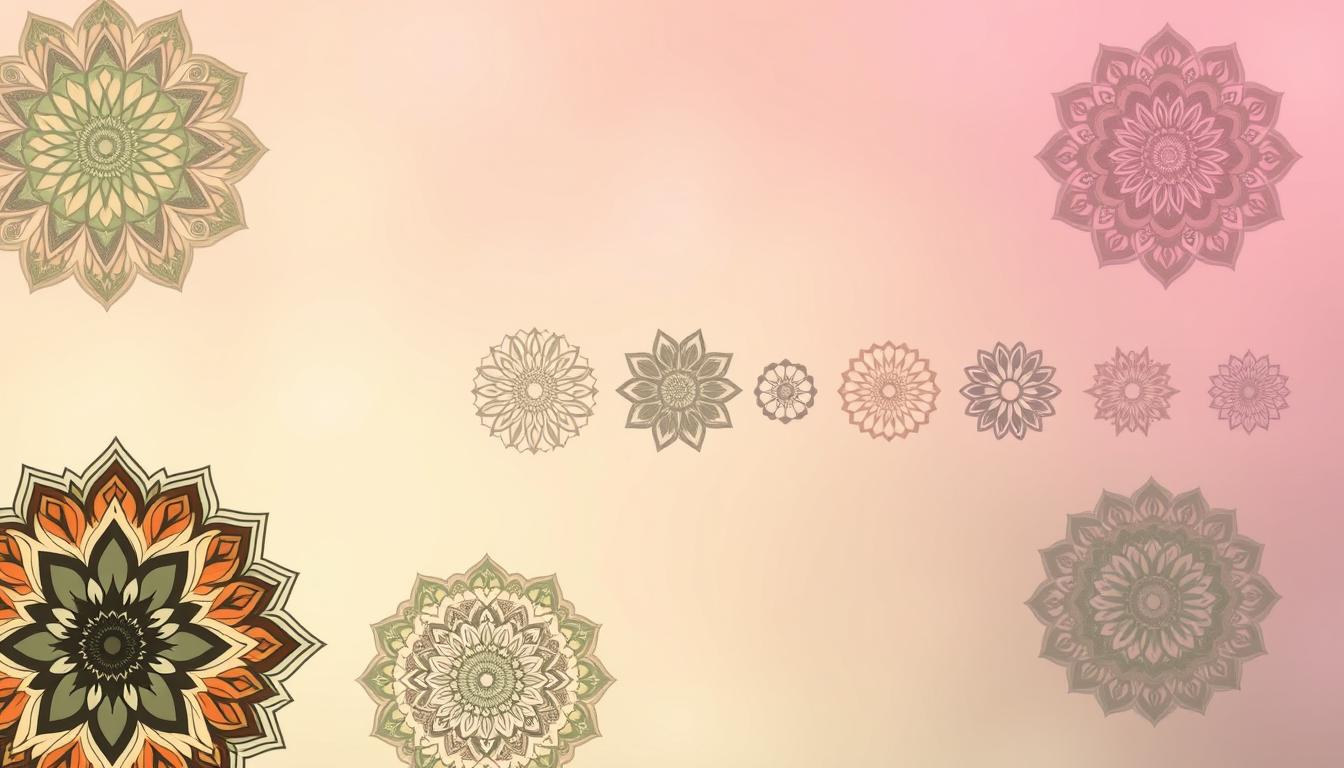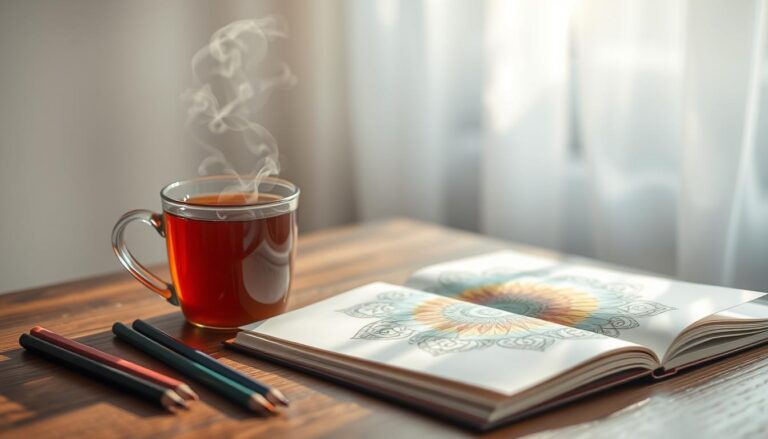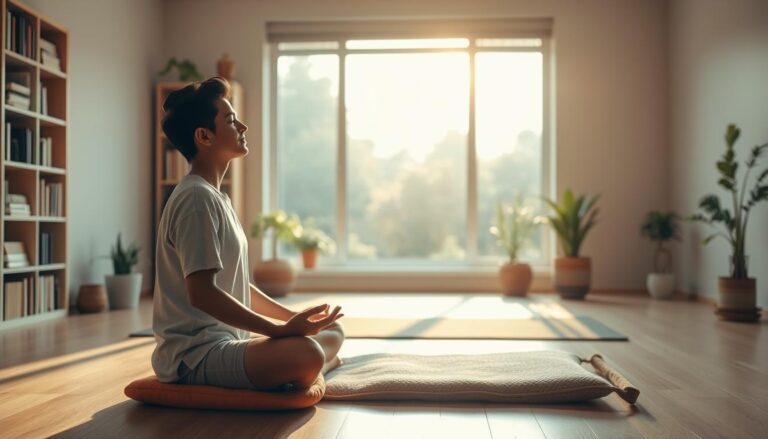Top 10 Mandala Coloring Ideas for Mindful Evenings
Unwind with our top mandala coloring ideas. Get started with our easy-to-follow guide and enjoy a calming, creative experience.
Welcome to a wonderful world of creative relaxation. After a long, busy day, finding a peaceful activity can be a true gift. This ancient art form offers a perfect way to unwind and center yourself.
This practice is far more than a simple hobby. It is a powerful tool for adults to calm the mind and reduce daily stress. You can tap into your creative side through this focused, meditative process.
Our comprehensive guide will walk you through ten stunning designs. These are perfect for creating serene, meditative evenings. You can lose track of time and fully immerse yourself in the therapeutic journey.
Whether you are new to this art or have years of experience, this article provides fresh inspiration. You will discover practical techniques to enhance your personal practice. Each piece you create is about the journey, not perfection.
Every moment you spend is an investment in your mental well-being. By the end of this guide, you will have the knowledge to create beautiful art. This will bring more beauty and tranquility into your daily life.
Key Takeaways
- Mandala art is a powerful, ancient practice for modern stress relief.
- Coloring these designs helps calm your mind and encourages creativity.
- This guide is suitable for both beginners and experienced artists.
- The focus is on the therapeutic journey, not achieving perfection.
- You will learn techniques to make your sessions truly mindful.
- Investing time in this art is an investment in your mental well-being.
- Discover how to bring more beauty and peace into your life.
Discover the History and Meaning of Mandalas
Beyond their captivating geometric beauty, these circular designs hold profound spiritual significance that spans millennia. They represent much more than pleasing visual arrangements.
Origins and Cultural Significance
The word “mandala” comes from Sanskrit, meaning “circle.” This sacred art form originated in Hinduism and Buddhism. It symbolizes wholeness, harmony, and the infinite universe.
Many cultures created similar circular symbols. Native American dream catchers and Christian stained glass windows share this tradition. They all feature repeating shapes radiating from a center.
Mandalas as Tools for Art Therapy and Meditation
In the early 1900s, Carl Jung pioneered using these designs in therapy. He believed they represented the whole self. This practice helps unlock unconscious thoughts and resolve trauma.
Working with these patterns engages both brain hemispheres. Your left brain focuses on intricate details. Your right brain taps into creative self-expression.
| Culture | Symbol Name | Key Characteristics |
|---|---|---|
| Hindu/Buddhist | Mandala | Sacred geometric patterns representing cosmic order |
| Native American | Dream Catcher | Web-like circular design for spiritual protection |
| Christian | Stained Glass Rose Window | Radiating patterns symbolizing divine light |
Understanding this rich background deepens your appreciation. It enhances the mindfulness you bring to each creative session. This knowledge transforms simple pattern work into meaningful personal practice.
Essential Mandala Coloring Ideas for a Calming Experience
Before you begin your creative session, setting up the right supplies and color combinations is key. This preparation helps create a truly relaxing artistic journey.
Remember there is no wrong way to approach your artwork. The most important rule is to relax and enjoy the process without judgment.
Choosing the Right Color Palette
Limiting your color choices actually creates more visual harmony. A thoughtful color scheme makes your finished piece more balanced.
Struggling to choose colors? Study basic color theory using a color wheel. This helps you understand how different hues work together.
Online tools like Coolors.co can help narrow down your choices. You can also find inspiration in nature’s beautiful color combinations.
Selecting Your Favorite Coloring Tools
The right tools make all the difference in your creative experience. Different mediums offer unique advantages for intricate designs.
| Tool Type | Best For | Precision Level |
|---|---|---|
| Colored Pencils | Detailed work & blending | High |
| Gel Pens | Fine lines & shimmer effects | Very High |
| Markers | Bold, vibrant coverage | Medium |
| Watercolor Brush Pens | Soft, blended effects | Medium-High |
Higher quality paper prevents bleeding and works better with various mediums. Experiment with different tools to discover your personal favorites.
Step-by-Step Guide to Coloring Your Mandalas
The way you apply color can significantly influence both the final look and your meditative experience. Think of these techniques as helpful suggestions, not strict rules, to find a way of working that feels right for you.
Color from the Center Outward
Many artists prefer starting at the very center of their mandalas. This method honors the design’s natural energy flow. You build the beauty outward from the epicenter, layer by layer.
It feels like nurturing a project from its heart. The complexity radiates naturally toward the edges as you work your way out.
Layering Techniques for Depth and Balance
Layering color adds incredible depth to your work. Start with a light base layer. Then, gradually build up intensity in specific areas of the pattern.
This creates shadows and highlights, making your art pop off the page. The result is a piece with wonderful visual balance and dimension.
Remember, the end goal is the journey itself. Try different approaches with various mandalas to see which process brings you the most peace and focus.
Explore Color Theory and Palette Creation
Creating a stunning color palette begins with a solid grasp of the basics. Knowing how colors work together will dramatically improve your artistic choices. This knowledge helps you build more harmonious and visually appealing designs.
Understanding Primary, Secondary, and Tertiary Colors
All color starts with the three primary colors: red, blue, and yellow. You cannot mix other hues to create these. They are the foundation of the color wheel.
Mixing two primary colors gives you secondary ones: green, orange, and violet. These open up a wider range of possibilities for your work.
Tertiary colors come from mixing a primary and a secondary hue. Examples are red-orange and blue-green. These complex shades add sophistication to any palette.
Leveraging Color Palette Generators and Tools
You can create countless variations from a few base colors. Tinting adds white to lighten a hue. Shading adds black or gray to darken it.
The color wheel is a practical tool for identifying harmonious relationships. Complementary colors sit opposite each other. Analogous colors are neighbors on the wheel.
Drawing Inspiration from Nature
Nature is an incredible artist. It provides perfect, ready-made color schemes. Observe a sunset or a flower garden for beautiful combinations.
Taking photos of your surroundings is a great way to gather inspiration. Understanding these principles will truly elevate your personal practice.
Experiment with Different Mandala Designs and Patterns
Personalizing your creative journey begins with discovering which artistic styles resonate with you. The world of circular artwork offers an incredible range of visual expressions to explore.
From bold geometric shapes to delicate floral motifs, each pattern provides a unique experience. You might find that simpler designs work best for quick relaxation sessions.
Variations in Design for a Personalized Touch
More intricate pieces can become multi-day projects for deeper immersion. Trying various complexity levels helps you identify what feels most satisfying.
Many artists develop personal collections of their favorite patterns. This ensures you always have inspiring options ready for your creative evenings.
You can add unique touches to any design by experimenting with color combinations. Leaving some areas uncolored creates beautiful contrast and visual balance.
Layering techniques offer endless creative possibilities. Try using markers first, then adding details with gel pens for depth and dimension.
Each completed piece becomes a reflection of your personal artistic vision. There are no limits to how you can express yourself through this meditative practice.
Tips and Tricks for a Satisfying End Result
Achieving a beautiful final piece involves more than just filling in patterns with color. The right approach can transform your creative sessions into truly rewarding experiences.
Embracing White Space for Visual Harmony
One of the most liberating tips is to embrace empty areas. You don’t need to fill every space with pigment. Leaving strategic sections untouched creates breathing room.
This approach prevents your work from feeling too busy. It adds elegant contrast and balance to the overall composition. The result is often more visually appealing.
Expressing Your Creativity with Flexible Techniques
Your choice of materials significantly impacts your practice. High-quality paper like Neenah Exact Index 110lb Cardstock prevents bleed-through. This allows you to use various tools without worry.
Experiment with different approaches each session. Try blending, layering, or adding metallic accents. Trust your instincts when selecting hues for your palette.
| Paper Type | Best For | Weight/Thickness | Special Features |
|---|---|---|---|
| Cardstock | Markers & Wet Media | 110 lb / 199 gsm | Prevents bleed-through |
| Watercolor Paper | Brush Pens & Paints | 140 lb / 300 gsm | Textured surface |
| Coated Canvas | Premium Prints | 13 mil thickness | Archival quality |
| Colored Cardstock | Creative Backgrounds | 65 lb / 176 gsm | Pre-colored bases |
With consistent practice, you’ll develop personal methods that bring you joy. The peaceful state you achieve during the process matters most for your well-being.
Conclusion
Your journey into the world of meditative art is a personal path to peace. We’ve explored everything from ancient roots to modern techniques for creating beautiful art.
Remember, the true value of this practice lies in the quiet, focused process itself. Each completed piece represents a moment of creative presence.
Approach your work with patience. Every artist finds their unique voice in their own time. Whether inspired by nature or a chosen palette, there are infinite ways to express yourself.
Make this a regular part of your life. The calm state of mind you gain is a precious gift. Embrace the magic of this timeless art form and continue your creative discovery.







